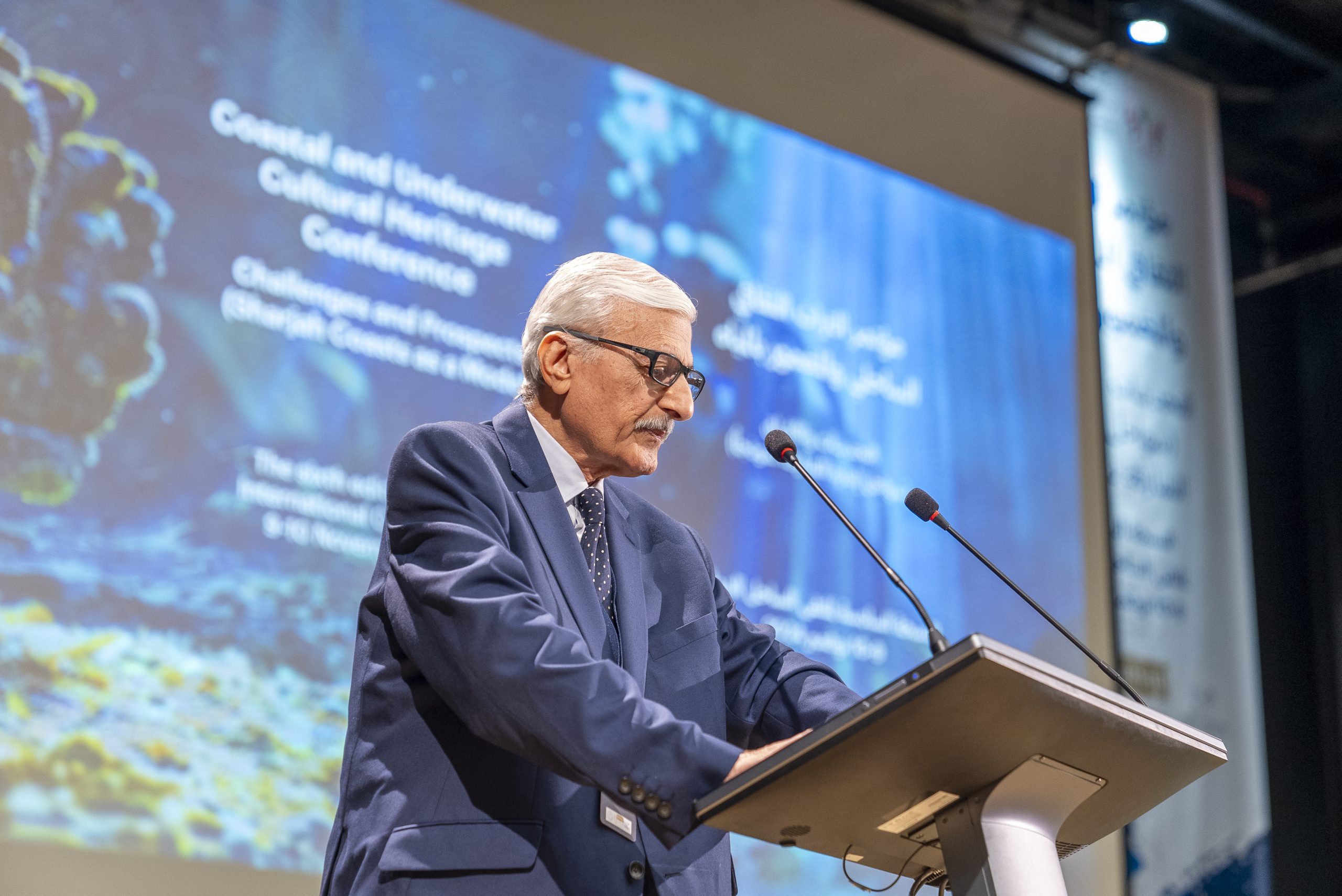Sharjah Archaeology Authority (SAA), on Monday organized a virtual lectured titled, “The scientific methodology for the restoration and detection of forgery of archaeological paintings.” Attended by over 200 participants, the goal of organizing the lecture was to spread awareness about the relevance of archaeological collections and painting among enthusiasts and specialists in the field. The lecture was moderated by Dr Mahmoud Sayed Qarni, faculty, College of Arts and Humanities
The lecture shed light on some of the most important components in archaeological oil paintings, materials used to create them and factors leading to their damage. Furthermore, a highlight into some of the famous global thefts, along with an insight into traditional and modern techniques to detect forgery of paintings, their restoration and maintenance were also provided.
The lecture began with Dr Qarni identifying some vital aspects of archaeological paintings, including analyzing surfaces and objects depicted in the painting. He also discussed various other components including types of paints and varnishes used by artists. A detailed overview on methods applied for the restoration of damaged oil paintings, including cleaning, strengthening and protecting layers of paint was also provided. Various recommendations to preserve these paintings from theft and forgery were also discussed towards the end of the lecture.
Oil paintings were extremely prominent in Egypt and Iraq. “When studying the painting historically, four important aspects must be taken into consideration, including name of painting, historical significance, name of the artist, school to which the painting belongs, the body to which the painting belongs and understanding the technicalities of the painting,” Dr Qarni said.
Also discussed were various methods to examine a particular painting. Some of the techniques discussed included cross-sectional examination, scanning paintings using ultraviolet rays and x-rays.
The type of examination through the researcher’s identification of the shape of grains of colored materials, and the correlation between them and the interstitial spaces, in order to identify the state of invisible damage, in addition to explaining the study and analysis of the canvas holder of the plate by identifying the type of fibers through examination by optical microscope to find out the histological composition For plate and its density.
The lecturer discussed that paintings usually tend to lose its sheen as time passes, while several other external factors also play a significant role in the deformation of a piece. These factors include painting technique, color types, medium and varying temperatures which could potentially cause damage of the painting. When discussing about damages caused to paintings an insight was also provided into the treatment of cracks, which commonly form on the surface of oil paintings. Another default issue observed in paintings include the formation of tiny air bubbles, which appear as a result of over exposure or any sort of external force applied to the painting.
Restoration and maintenance techniques discussed included removing varnish, fixing color fades and peeling layers along with treatment of visible cracks. “The treatment process takes place through several steps, including cleaning the canvas with an eraser, and treating Its acidity, repair of lacerations and treatment of gaps, as well as cushioning. “
Dr Qarni explained the difference between forgeries and counterfeiting, stating that forgery is replicating an international painting and signing it off with the name of the original renowned artist. Counterfeiting on the other hand is emulating a famous painting using new materials.
He explained the criteria for choosing an expert to detect plate forgery, which is his possession of sufficient experience in forgery methods, whether primitive or advanced, the ability to detect plate forgery through devices and technologies, knowledge in industrial and natural obsolescence, as well as his possession of historical, chemical, physical and technical experience, as well as the methods discussed. Used in the detection of oil paintings, most notably “visual examination through the technical expert, and the historical anomalies that are supposed to exist at the time of the implementation of the original painting, in addition to the examination by ultraviolet rays, x-rays, the study of the oil medium, and the mamphoto study of the painting surface.”
Sharjah Archaeology Authority provides a platform to learn about the various aspects regarding the preservation of the local archaeological and heritage components, to align with the values and stature of the Emirate of Sharjah. They constantly apply a systematic work approach, in accordance with the latest international practices and pioneering standards, to ensure sustainability in preserving archaeological heritage for future generations to know.




